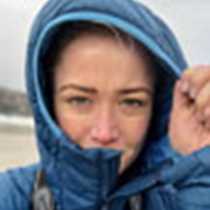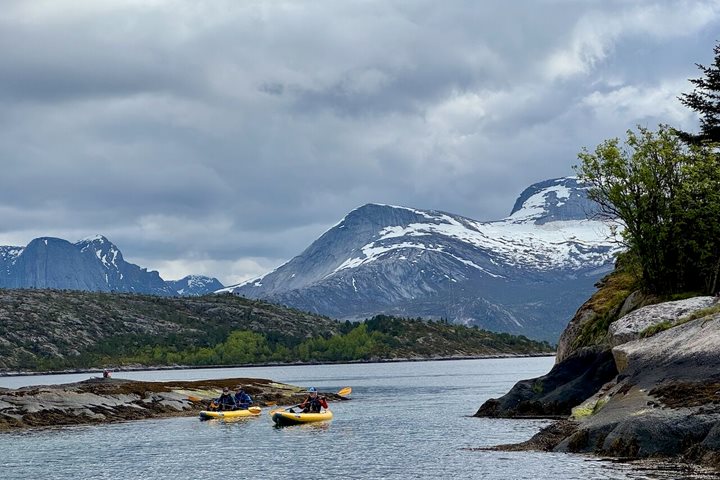Where warmer seawater meets colder seawater you will find warmer air meeting colder air. This is exactly what happens at polar fronts. Pinpointing a polar front, however, is a challenging task: They are constantly moving. Their location depends on an array of variables. Temperature, winds, ocean currents, large scale oceanic processes and so on and so forth. There are a few key giveaways though—fog, mist, and rain are three of them.
So what did we find today as we sailed further and further north from Trømso in northern Norway to Svalbard, the high Arctic Archipelago that will be the basis for the next week of our expedition? Fog? Mist? Rain? Yes, yes, and yes. But what else we found flouts any qualms one may have with fog mist and rain.
Staring up at a cliff face over two hundred feet above our heads, the top shrouded in the mist, the bottom veiled by fog and our Gore-Tex proving worth the investment as the rain dropped determinedly into the Zodiacs—it was the seabirds not the weather that stole our attention. We had arrived at Bjørnøya.
Bjørnøya, or Bear Island, is so named on account of a polar bear spotted swimming nearby when Willem Barents officially discovered the island in the late 16th century. Having been a mecca for walrus hunters and fishermen in the centuries since the 1500s, today the island and its surrounding sea is protected to a distance of 12 miles. Although the walrus may never have returned in the numbers witnessed hundreds of years previously, there remains a staggering abundance of seabirds.
Where you find warmer seawater meeting colder seawater and thus warmer air meeting colder air you also find a huge amount of oceanic productivity. The water is turbid—essentially it’s mixing and nutrients from deep water are being driven to the surface. In spring and summer a bit of sunshine is added to the mix and the phytoplankton start to photosynthesise on mass and thus the zooplankton start to feed on mass. The result is a highly productive area of ocean where the tiny plants and animals are having a colossal influence on the food web as a whole.
The seabirds found at Bjørnøya are found in numbers tipping hundreds of thousands. Guillemots line the cliffs in their neat but precarious rows, northern fulmars soar effortlessly around our Zodiacs and kittiwakes fly way overhead, their calls more discernible than their bodies through the mist. Bjørnøya can be cloaked in the most resolute weather the polar front can deliver, but when you are up against a towering cliff face appreciating the immensity of this remote island and its profusion of seabirds and the sights, sounds, and smells that come with them a little bit of mist, fog, and rain is neither here nor there.
Our afternoon was spent taking in these impressive cliff faces and somewhat overwhelming numbers of seabirds as the expedition staff navigated the Zodiacs through the rolling swell and thick fog. There are few places on Earth where seabirds can be witnessed in such abundance and with such an unfeigned backdrop. What’s more, there are few people that will ever have the spectacular chance to visit bird cliffs such as those found at Bjørnøya. Places such as these tend to be remote, they tend to be challenging, and they tend to be some of the most remarkable places on Earth.







